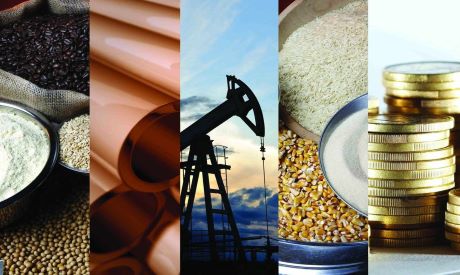Executive Summary
1970s stagflation redux
At stagflation’s core is severe under-investment – new capex cycle is absent
With no supply response in sight, commodities are the perfect hedge against stagflation trepidation
- It is exactly 50 years since the Organisation of the Petroleum Exporting Countries (OPEC) imposed an oil embargo on America, turning a modest inflation problem into a protracted bout of soaring prices and economic misery.
- Now the stagflation of the 1970s – portmanteau of slowing growth and elevated inflation – is reawakening.
- Whilst recessions observe contractions in demand which lead to surpluses and downwards pressure on commodities, stagflation rather, observes demand remaining above supply, and thus there are persistent shortages of physical goods and services.
- Given that commodities are assets which perform best when they are in deficits, they are the ideal hedge that have historically proven to offer high returns, low correlation with other asset classes and protection from inflation during stagflationary episodes.
- Looking at the 1970s – the best example of stagflation – commodities performed well on an outright and relative basis, especially during late-cycle (which is where we are today).
- At stagflation’s core is severe limitations on supply which the market has to rebalance through demand destruction.
- We hold conviction that Fed-induced slowdowns are merely a short-term abatement of the symptom – inflation – and not a cure for the problem – inadequate production capacity led by a near-decade of underinvestment in carbon-intensive supply.
- When Fed Chair Volcker tamed inflation through sharp increases in the Fed Funds Rate between 1980-81, it was after a decade of rising capex during Fed Chair Burns’ period in office, that allowed the subsequent fall in demand the space to debottleneck global supply chains. Fast forward to today, a new investment cycle has yet to emerge and when it does it will likely be disorderly and prolonged as ESG investing (fairly) influences capital flows needed to stimulate the next round of investment.
- While it appears that higher for longer rates are needed today to lower demand and inflation, they may also drive a fall in capex that will prolong the structural underinvestment in physical commodities – that underpins our supercycle thesis (see here).
- We believe that by only promoting higher investment in capacity, and bearing the cost of higher physical inflation today, can policymakers avoid the supply constraints of stagflation. Absent a sufficient supply response, commodities remain the perfect hedge against stagflation trepidation.
- Breaking down commodities into their sub-groups, our expectations into year-end are:
- Energy (bullish). Supply-constrained underinvested tight markets.
- Base metals (neutral). Tepid demand led by China, but green transition is keeping supply tight.
- Precious metals (neutral-to-bullish). Buoyed as a defensive inflation hedge, but capped by a firm US dollar.
- Agriculture (bullish). Geopolitics and weather patterns constraining supply.


